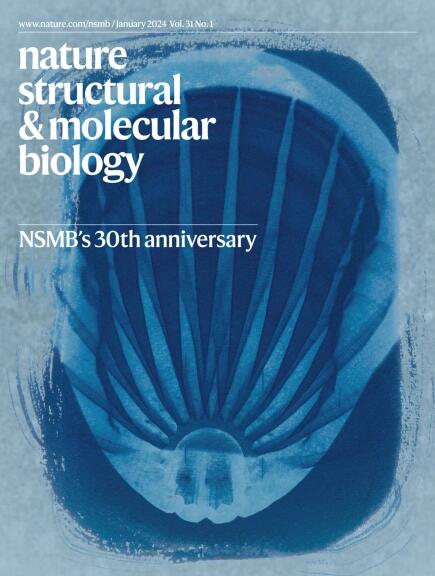OGT通过抑制TET活性在全基因组范围内阻止DNA去甲基化并抑制异染色质中转座因子的表达
IF 10.1
1区 生物学
Q1 BIOCHEMISTRY & MOLECULAR BIOLOGY
引用次数: 0
摘要
O-GlcNAc转移酶(OGT)与所有三种哺乳动物TET甲基胞嘧啶双加氧酶都有很强的相互作用。本研究表明,小鼠胚胎干(mES)细胞中Ogt基因的缺失导致正色和异色细胞室中TET产物5-羟甲基胞嘧啶的广泛增加,同时在相同的基因组区域中TET底物5-甲基胞嘧啶的减少。用OGT抑制剂处理的mES细胞也显示出5-羟甲基胞嘧啶增加,并且减弱mES细胞中TET1-OGT相互作用导致全基因组5-甲基胞嘧啶减少,表明OGT抑制TET活性并限制不适当的DNA去甲基化,这种方式需要TET - OGT相互作用和OGT的催化活性。ogt缺陷细胞中的DNA低甲基化伴随着主要位于异染色质中的转座因子的降低。我们认为,OGT可以保护基因组免受tet介导的DNA去甲基化和异染色质完整性丧失的影响,防止癌症、自身免疫性炎症疾病、细胞衰老和衰老中转座因子表达的异常增加。本文章由计算机程序翻译,如有差异,请以英文原文为准。


OGT prevents DNA demethylation and suppresses the expression of transposable elements in heterochromatin by restraining TET activity genome-wide
O-GlcNAc transferase (OGT) interacts robustly with all three mammalian TET methylcytosine dioxygenases. Here we show that deletion of the Ogt gene in mouse embryonic stem (mES) cells results in a widespread increase in the TET product 5-hydroxymethylcytosine in both euchromatic and heterochromatic compartments, with a concomitant reduction in the TET substrate 5-methylcytosine at the same genomic regions. mES cells treated with an OGT inhibitor also displayed increased 5-hydroxymethylcytosine, and attenuating the TET1–OGT interaction in mES cells resulted in a genome-wide decrease of 5-methylcytosine, indicating that OGT restrains TET activity and limits inappropriate DNA demethylation in a manner that requires the TET–OGT interaction and the catalytic activity of OGT. DNA hypomethylation in OGT-deficient cells was accompanied by derepression of transposable elements predominantly located in heterochromatin. We suggest that OGT protects the genome against TET-mediated DNA demethylation and loss of heterochromatin integrity, preventing the aberrant increase in transposable element expression noted in cancer, autoimmune-inflammatory diseases, cellular senescence and aging. Here the authors show that the disruption of OGT expression in mouse embryonic stem cells unleashes TET activity, causing genome-wide decreases in DNA methylation and increases in 5-hydroxymethylcytosine, leading to the derepression of transposable elements and, in certain cases, the activation of nearby genes.
求助全文
通过发布文献求助,成功后即可免费获取论文全文。
去求助
来源期刊

Nature Structural & Molecular Biology
BIOCHEMISTRY & MOLECULAR BIOLOGY-BIOPHYSICS
CiteScore
22.00
自引率
1.80%
发文量
160
审稿时长
3-8 weeks
期刊介绍:
Nature Structural & Molecular Biology is a comprehensive platform that combines structural and molecular research. Our journal focuses on exploring the functional and mechanistic aspects of biological processes, emphasizing how molecular components collaborate to achieve a particular function. While structural data can shed light on these insights, our publication does not require them as a prerequisite.
 求助内容:
求助内容: 应助结果提醒方式:
应助结果提醒方式:


